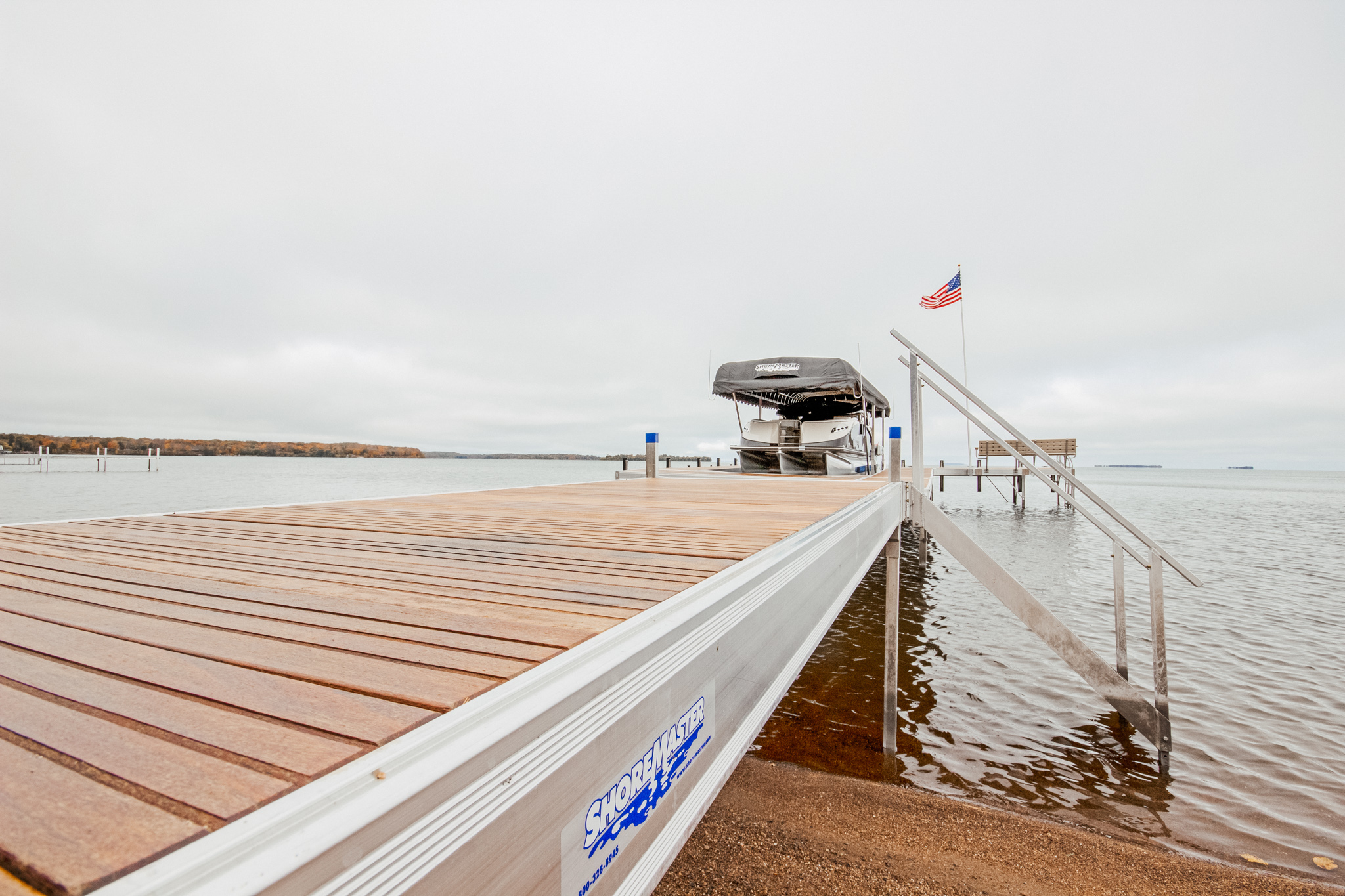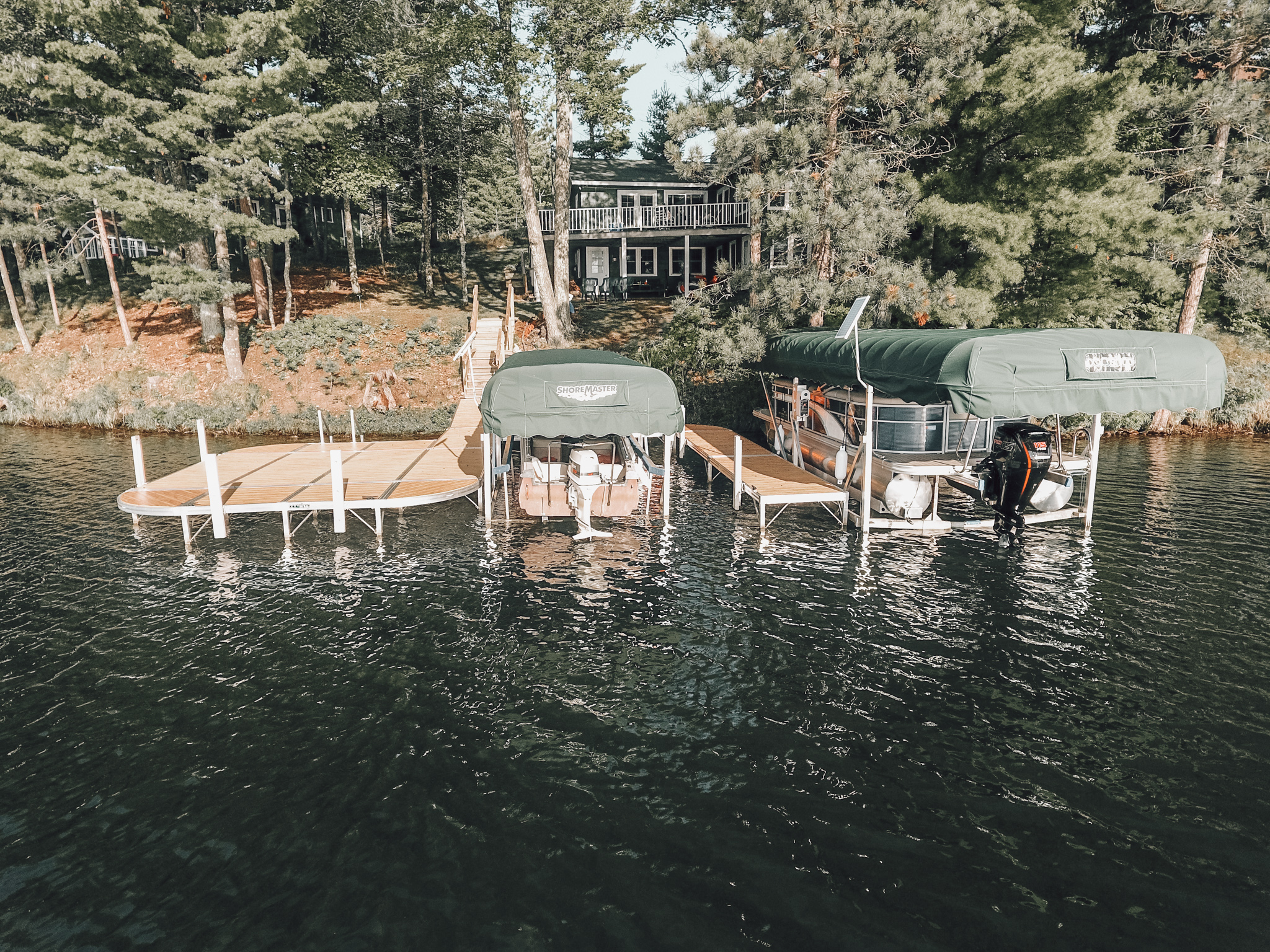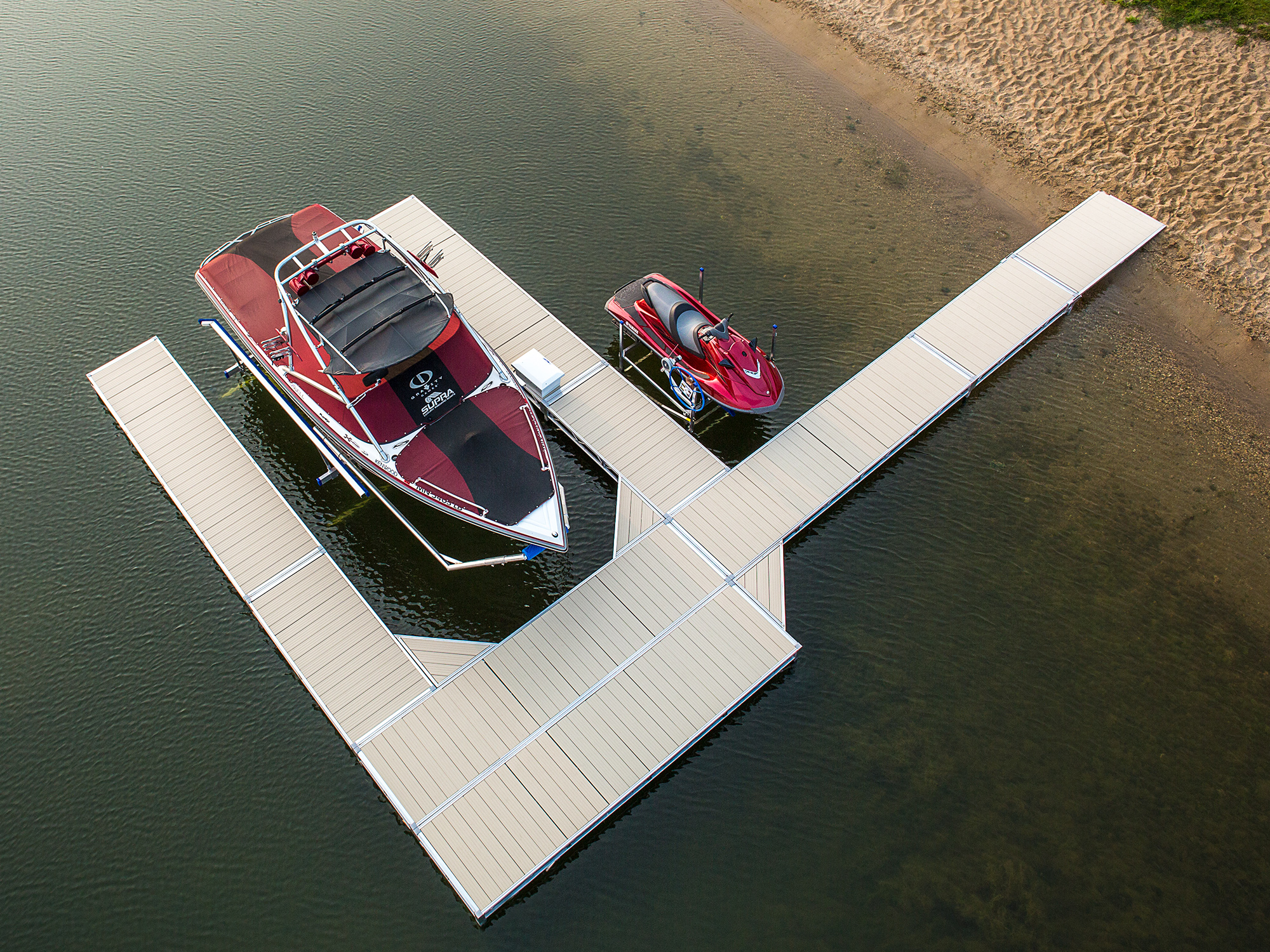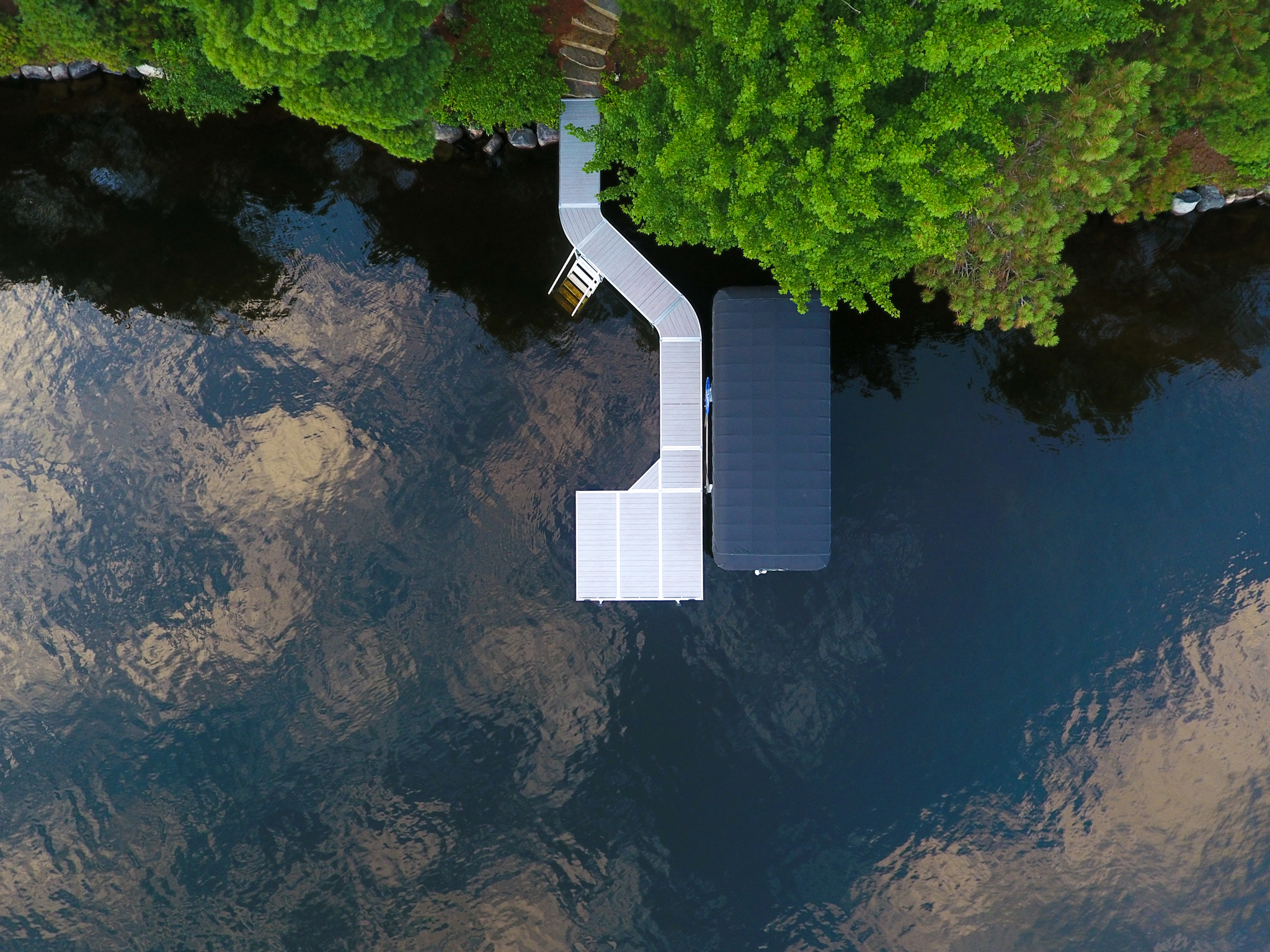July 20, 2023
Residential floating dock: Choosing the ideal residential floating dock
Written by ShoreMaster Marketing
For waterfront property owners, a residential boat dock is essential to completing their shoreline. A floating boat dock system for your home might be just the thing you need as the base for your ideal dock system. ShoreMaster can help you answer questions about floating docks, whether they’ll work for you, and how to get started with your waterfront project.

Guide to Choosing a Residential Floating Dock
Whether you have your heart set on a floating dock system or need more information before taking the plunge, your local ShoreMaster dealer can help you find the ideal solution for your shore. Following are some common questions boaters have about floating dock systems and the answers from our experts.
What is a residential floating dock?
A residential floating dock is a dock system intended for home or personal use. While ShoreMaster floating dock systems are also a great fit for commercial use, they’re ideal for the residential waterfront owner as well. Our floating dock systems offer a convenient, low-maintenance way to enjoy your water.
Floating docks attach flotation devices on the bottom of the dock frame to allow the system to float, with anchors that hold the system in one place in the water instead of other support systems like legs or piles. Advances in engineering across the industry have ensured that floating dock systems provide the stability and quality you’re used to from more traditional boat dock options, with all the benefits that floating docks offer.
What are the advantages of a floating dock over other types of docks?
Floating docks are easy to install, especially if you use one from ShoreMaster. Since they do not require pile installation or leg adjustments and are lightweight, assembling your dock system on shore and then pushing it out into the water is very simple. This makes it ideal for DIY boat dock owners.
Floating dock systems are also a great fit for shorelines and waters that might be problematic for other boat dock systems. Piles and legs aren’t a good fit for especially deep water or shores with sudden drop-offs because they won’t reach the bottom. However, anchorage systems don’t have those same limitations. This is also true of water levels that fluctuate dramatically throughout your boating season. Because floating docks are anchored in place rather than secured to legs or piles, your floating boat dock system automatically adjusts to water levels. This ensures that your dock surface is always above the water, which is a bonus and also means any electrical components of your waterfront system never become submerged.
ShoreMaster floating boat lifts also have benefits beyond these. Consider the construction of the floats, which feature a UV-resistant outer shell for durability in all weather that fully encapsulates the inside of the flotation system. Floating docks from ShoreMaster are unlikely to break. If they do, the foam-filled float with expanded polystyrene beads helps the system maintain buoyancy even if the outer shell is punctured. Combine these engineering and construction considerations with the configurability and options available on all ShoreMaster systems and the expertise of a local ShoreMaster dealer, and you can assemble your perfect waterfront system.
Are there any permits or regulations I need to consider for installing a residential floating dock?
The particulars of floating dock installation vary depending on your area. Local and state laws, HOA bylaws, and other regulations affect what you can and can’t do on your waterfront property. It’s always important to consult your local laws before undertaking any large, expensive projects. Your local ShoreMaster dealer knows the area and can ensure you aren’t missing any crucial steps on the way to installing your floating dock system.
When it comes to boat dock installation, there are common regulations to consider, including but not limited to restrictions on the size, length, or width of the floating dock system. Other factors to consider include whether the dock system is permanent, the specific location of the installation, and whether the proposed system would unreasonably interfere with water flow, neighboring properties, or sunlight reaching the bottom of the water.
However, floating docks are probably one of the easier types to install, especially if you’re a residential boater that won’t be using your boat dock system for commercial purposes. Because anchoring systems don’t have as large of a footprint as legs or piles do, they’re very easy to construct and install and have minimal impact on the water and bottom underneath them. This makes them a better fit for many waterfronts that are protected or have fragile ecosystems that need to be protected.
Can I install a residential floating dock myself, or should I hire a professional?
Luckily, residential floating dock systems are easy to install on your own, especially if you’re choosing a high-quality system from ShoreMaster. Because the dock floats and is secured with anchors rather than requiring legs or piles, it’s easy to assemble your boat dock on shore and simply float it out to where it needs to go. This also means that residential floating dock systems are easy to remove for the seasonal boater or when inclement weather threatens your dock system.
For first-time floating dock owners or those who aren’t expert DIYers, we do recommend hiring professional help. If you are confident in your ability to install the boat dock yourself but desire the added reassurance of professional expertise, hiring professional help is an excellent option. A professional can provide the peace of mind you seek, ensuring a successful and efficient installation.
Your local ShoreMaster dealer can help you with installation help, whether that means building the system from the ground up or just giving you pointers along the way.



